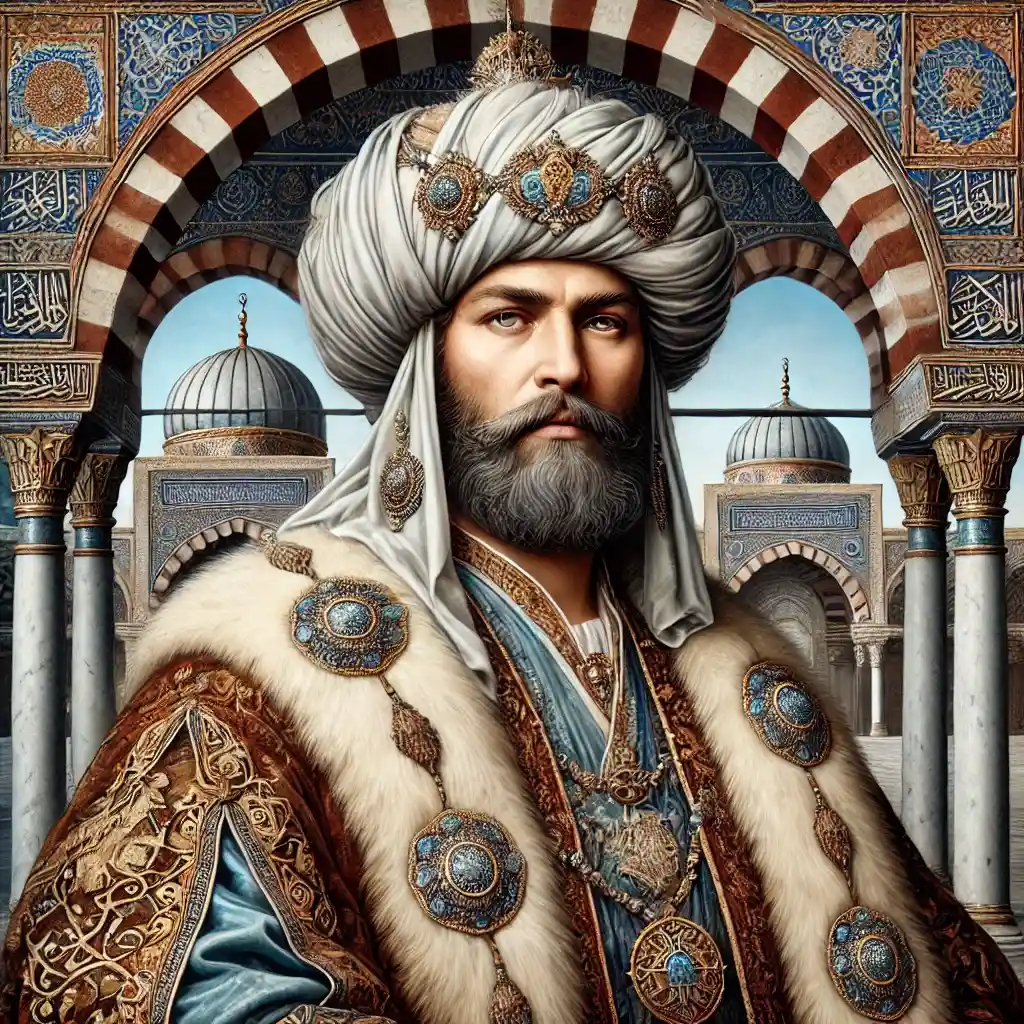Osmanlı İmparatorluğu'nun beşinci padişahı olan I. Mehmed (Çelebi Mehmed), 1413-1421 yılları arasında tahtta bulunmuştur. Osmanlı'nın Fetret Devri olarak bilinen ve siyasi krizlerle dolu bir dönemden çıkmasını sağlayarak devletin yeniden güç kazanmasına öncülük etmiştir. Bu nedenle Osmanlı tarihçileri tarafından "Devleti ikinci kuran padişah" olarak anılmaktadır. Şimdi, onun hayatını ve Osmanlı tarihine katkılarını detaylı şekilde inceleyelim.
I. Mehmed, widely known as Çelebi Mehmed, was the fifth Sultan of the Ottoman Empire, ruling from 1413 to 1421. Born in 1389 as the son of Sultan Bayezid I and Devlet Hatun, he emerged as a key figure during one of the most tumultuous periods in Ottoman history, the Ottoman Interregnum. His reign marked the end of this crisis and the beginning of a period of restoration and consolidation for the empire. Often referred to as the “second founder of the Ottoman Empire,” I. Mehmed played a crucial role in stabilizing the state and laying the foundation for its future expansion.
Early Life and Family Background
Birth and Parentage
I. Mehmed was born in 1389 in the Ottoman capital of Bursa. His father, Sultan Bayezid I, was a prominent ruler, known for his military conquests and administrative reforms. His mother, Devlet Hatun, was of noble lineage, and her guidance played an important role in Mehmed’s upbringing.
Childhood and Education
Raised in a politically volatile era, Mehmed’s education focused on governance, military strategy, and Islamic studies. His tutors included renowned scholars and military commanders, ensuring he was well-prepared for the challenges of leadership.
Impact of the Battle of Ankara (1402)
The catastrophic defeat of Sultan Bayezid I by Timur at the Battle of Ankara marked a turning point in Mehmed’s life. This event led to the fragmentation of the empire and the Ottoman Interregnum, during which Mehmed and his brothers vied for control.
Sibling Rivalries and Survival
Mehmed faced intense competition from his brothers during the Interregnum, including Musa Çelebi and Süleyman Çelebi. His ability to outmaneuver his rivals demonstrated his political acumen and determination.
Inheritance of a Divided Empire
When Mehmed finally emerged victorious in 1413, he inherited a fractured state. His first task as Sultan was to reunify the empire and restore its administrative and military structures.
Military Campaigns and Consolidation of Power
Reunification of the Empire
Upon ascending the throne, I. Mehmed focused on reuniting the Ottoman territories that had been divided during the Interregnum. He successfully subdued his rivals and reestablished central authority.
Balkan Campaigns
Mehmed launched several campaigns in the Balkans to secure Ottoman control over key territories. His efforts ensured the stability of the region and reinforced Ottoman dominance.
Naval Operations
Recognizing the importance of maritime power, Mehmed strengthened the Ottoman navy. This allowed the empire to secure key ports and trade routes in the Aegean and Black Seas.
Military Innovations
During his reign, Mehmed introduced reforms to modernize the Ottoman military. These included the expansion of the Janissary corps and the introduction of new strategies to counter external threats.
Dealing with Internal Revolts
Mehmed also faced internal revolts, particularly from discontented factions within the empire. His swift and decisive actions quelled these uprisings, ensuring the stability of his reign.
Administrative and Economic Reforms
Restoration of Governance
I. Mehmed worked tirelessly to restore the administrative structures that had been disrupted during the Interregnum. He appointed capable officials and reorganized the provincial governance system.
Economic Recovery
Mehmed implemented economic policies aimed at revitalizing trade and agriculture. His efforts included reducing taxes and encouraging commerce, which helped stabilize the empire’s economy.
Legal Reforms
To ensure justice and fairness, Mehmed introduced legal reforms that strengthened the rule of law across the empire. These reforms enhanced the loyalty of his subjects and reinforced central authority.
Cultural and Religious Patronage
A devout Muslim, Mehmed supported the construction of mosques, madrasas, and other religious institutions. His patronage of Islamic scholars and artists contributed to a cultural renaissance in the empire.
Integration of Diverse Communities
Mehmed’s policies were inclusive, promoting harmony among the empire’s diverse ethnic and religious groups. This approach helped foster unity and stability within the state.
Legacy and Historical Significance
The “Second Founder” of the Empire
I. Mehmed’s efforts to reunify and restore the Ottoman state earned him the title of the “second founder” of the empire. His reign marked the transition from chaos to stability, laying the groundwork for future expansion.
Foundation for Future Success
Mehmed’s administrative and military reforms provided a strong foundation for his successors, particularly Sultan Murad II, who would continue the empire’s ascent.
Cultural and Religious Contributions
Mehmed’s patronage of Islamic culture and institutions left a lasting legacy. His support for scholars, poets, and architects enriched Ottoman society.
Historians’ Perspectives
Historians regard Mehmed’s reign as a pivotal period in Ottoman history. His ability to overcome immense challenges and rebuild the empire is seen as a testament to his leadership skills.
Lessons from His Reign
Mehmed’s reign offers valuable lessons in resilience, strategic thinking, and the importance of effective governance during times of crisis.
I. Mehmed (çelebi Mehmed) İngilizce Biyografisi
"I. Mehmed (Çelebi Mehmed) İngilizce Biyografisi" başlığı altında, Osmanlı İmparatorluğu’nun beşinci padişahı olan Çelebi Mehmed’in hayatı ve liderliği detaylı bir şekilde ele alınmıştır. Onun çabaları, Osmanlı’nın siyasi ve idari birliğini yeniden sağlamakta kritik bir rol oynamış ve gelecekteki başarıların temelini atmıştır.
Summary: The Restorer of Ottoman Unity
- I. Mehmed (Çelebi Mehmed), the fifth Sultan of the Ottoman Empire, ruled from 1413 to 1421.
- He successfully ended the Ottoman Interregnum, reunifying the empire after a period of division and chaos.
- His reign was marked by military campaigns, administrative reforms, and economic recovery efforts.
- Mehmed strengthened the Ottoman navy, modernized the military, and expanded the Janissary corps.
- His legal and cultural initiatives reinforced central authority and promoted Islamic education and architecture.
- Historians recognize him as the “second founder” of the Ottoman Empire for his role in stabilizing the state.
- Mehmed’s leadership laid the foundation for the future expansion and success of the empire.
- His inclusive policies fostered unity among the diverse populations of the Ottoman state.



